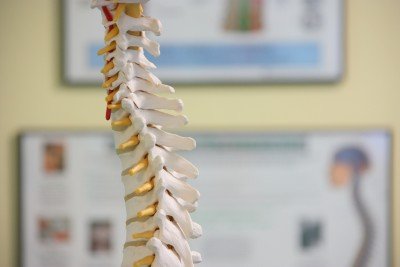Staying safe with physiotherapy
 Mark Fletcher, Clinical Director of Physio Med, provides advice on physiotherapy measures that can be taken in an office environment to safeguard employee wellbeing.
Mark Fletcher, Clinical Director of Physio Med, provides advice on physiotherapy measures that can be taken in an office environment to safeguard employee wellbeing.
For those that spend the majority of their time at a desk during the working day, you may assume that the chance of sustaining an injury is pretty small. Surprisingly though, almost 30 per cent1 of workplace injuries occur in office-based jobs.
It’s a common misconception that more physically demanding jobs pose a bigger risk to health and wellbeing. Bad posture and unsuitable workstations aren’t generally considered a danger, though desk-based jobs do put employees at risk of a range of musculoskeletal disorders (MSDs.) According to Sickness Absence Reporting Tool (SART), back pain is currently the largest reported reason for sickness absence in the UK, so it’s paramount that both employees and employers take steps to safeguard themselves against MSDs.
And, with employers facing increasing pressures to find a solution that improves absence rates and employee wellbeing, the answer could lie in working to prevent injuries before they happen, which can be achieved by employers being aware of risks and providing training and education for their staff.
Employers should carry out a DSE (Display Screen Equipment) assessment to confirm that every workstation is correctly set up. This includes everything from ensuring the chair is in good working order and set to the right height and angles, to where and how the mouse, screen and keyboard are positioned.
Whilst the responsibility falls to the employee to sit correctly, employers should still provide training sessions or written guidance in order to minimise the risk of injury.
The correct sitting position is to sit with the ear, shoulder and hip in line, holding the spine in its natural ‘S’ curve, but many people don’t follow this advice. Research shows that poor sitting posture almost doubles the units of pressure on the spine compared to standing, so it’s important to keep moving. 41 per cent of office workers spend less than 30 minutes a day standing up at work2, which is a major problem. It’s understandable that moving on a regular basis can sometimes be tricky in a workplace environment, but there are some simple exercises that employees can do at their desks to safeguard themselves against MSDs.
It’s important to take care of the following key areas: neck and upper back, lower back, shoulders, elbows and wrists. To stretch the neck muscles: sit up straight with a slight curve in the base of the spine, focus on an object at eye level and slowly (without moving your shoulders or looking up or down) tuck your chin in and hold the position for two seconds. Even gently massaging the neck area (using the left hand to massage the right side of the neck and vice versa) can help to reduce tension. It really can be as simple as that.
For those working at a computer, relieving tightness in the shoulders is a particular area that needs concentration. A simple, discreet exercise is to sit upright with a slight curve in the base of your spine, look forward and tuck your chin in slightly. Relax the arms, lift your shoulders towards the ears as high as possible, hold for two seconds, then lower to the start position and repeat. Then again with the arms relaxed, pull the tip of the shoulders backwards and then lower your shoulders, hold for two seconds and then raise to the start position and repeat. Employees should be encouraged to do all of this ten times twice a day to reduce tightness and maintain correct range of movement.
It’s paramount that businesses promote exercises such as this in order to safeguard against MSDs as is it something that can affect employees in most job roles. Having good working environment practices set up and ensuring that both employers and employees are aware of simple exercises really will help to improve health and wellbeing in the workplace.
Mark Fletcher is clinical director of Physio Med.
- Statistics gathered from Health and Safety Executive report based on RIDDOR (Reporting of Injuries, Diseases and Dangerous Occurrences Regulations) for 2012/13.
- According to a survey from Get Britain Standing and the British Heart Foundation (BHF) charity.
Staying safe with physiotherapy
Mark Fletcher, Clinical Director of Physio Med, provides advice on physiotherapy measures that can be taken in an office environment
Safety & Health Practitioner
SHP - Health and Safety News, Legislation, PPE, CPD and Resources
Related Topics
Future-proofing safety: Five trends shaping the PPE landscape of tomorrow
Arco backs SHP campaign for PPE inclusivity
Beth Holroyd: ‘PPE that’s not designed with women in mind is a fundamental problem’

